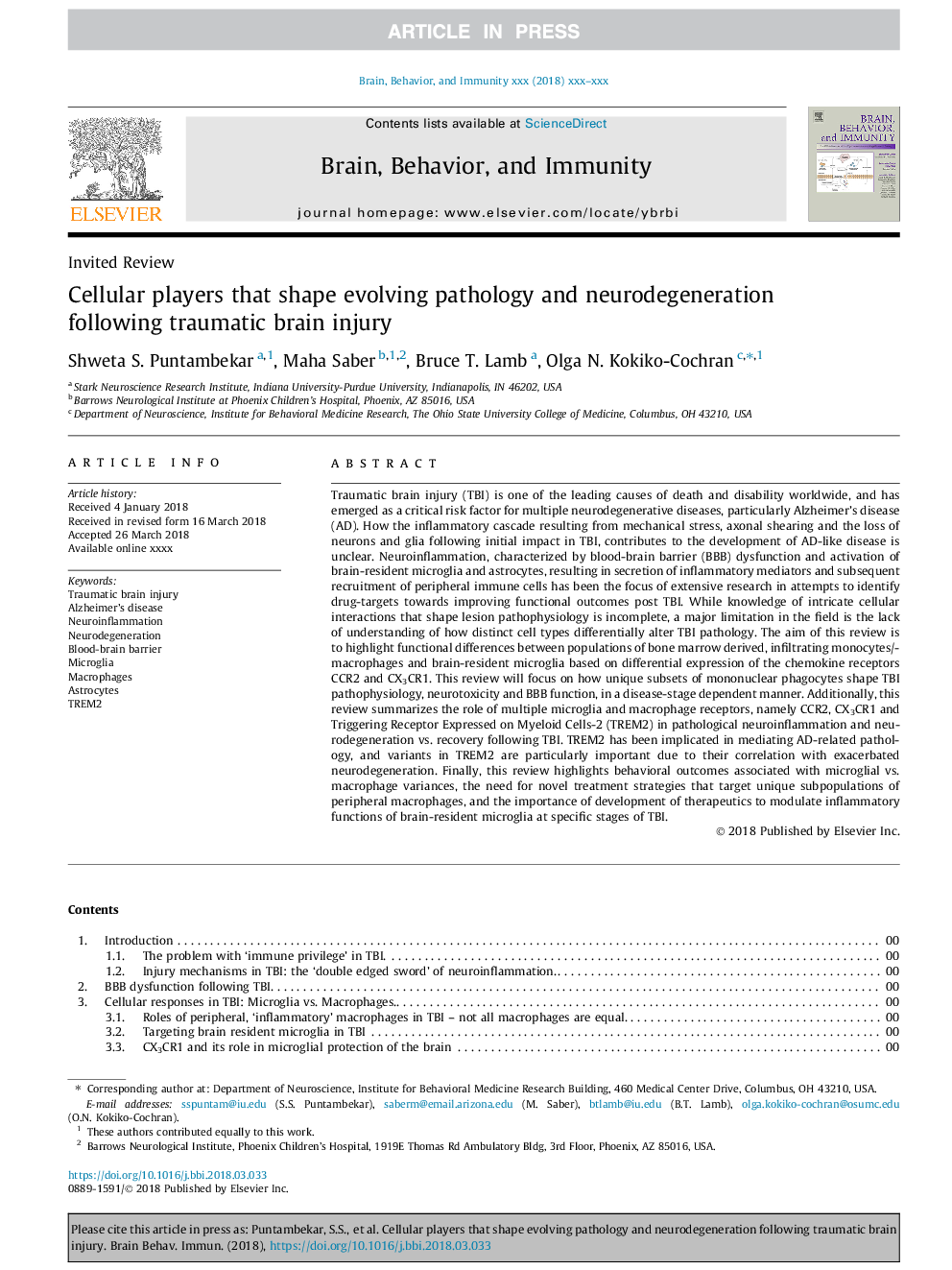| کد مقاله | کد نشریه | سال انتشار | مقاله انگلیسی | نسخه تمام متن |
|---|---|---|---|---|
| 7279086 | 1473895 | 2018 | 9 صفحه PDF | دانلود رایگان |
عنوان انگلیسی مقاله ISI
Cellular players that shape evolving pathology and neurodegeneration following traumatic brain injury
ترجمه فارسی عنوان
بازیکنان سلولی که آسیب شناسی تکاملی را ایجاد می کنند و عصب اخطاری پس از آسیب مغزی آسیب دیده
دانلود مقاله + سفارش ترجمه
دانلود مقاله ISI انگلیسی
رایگان برای ایرانیان
کلمات کلیدی
موضوعات مرتبط
علوم زیستی و بیوفناوری
ایمنی شناسی و میکروب شناسی
ایمونولوژی
چکیده انگلیسی
Traumatic brain injury (TBI) is one of the leading causes of death and disability worldwide, and has emerged as a critical risk factor for multiple neurodegenerative diseases, particularly Alzheimer's disease (AD). How the inflammatory cascade resulting from mechanical stress, axonal shearing and the loss of neurons and glia following initial impact in TBI, contributes to the development of AD-like disease is unclear. Neuroinflammation, characterized by blood-brain barrier (BBB) dysfunction and activation of brain-resident microglia and astrocytes, resulting in secretion of inflammatory mediators and subsequent recruitment of peripheral immune cells has been the focus of extensive research in attempts to identify drug-targets towards improving functional outcomes post TBI. While knowledge of intricate cellular interactions that shape lesion pathophysiology is incomplete, a major limitation in the field is the lack of understanding of how distinct cell types differentially alter TBI pathology. The aim of this review is to highlight functional differences between populations of bone marrow derived, infiltrating monocytes/macrophages and brain-resident microglia based on differential expression of the chemokine receptors CCR2 and CX3CR1. This review will focus on how unique subsets of mononuclear phagocytes shape TBI pathophysiology, neurotoxicity and BBB function, in a disease-stage dependent manner. Additionally, this review summarizes the role of multiple microglia and macrophage receptors, namely CCR2, CX3CR1 and Triggering Receptor Expressed on Myeloid Cells-2 (TREM2) in pathological neuroinflammation and neurodegeneration vs. recovery following TBI. TREM2 has been implicated in mediating AD-related pathology, and variants in TREM2 are particularly important due to their correlation with exacerbated neurodegeneration. Finally, this review highlights behavioral outcomes associated with microglial vs. macrophage variances, the need for novel treatment strategies that target unique subpopulations of peripheral macrophages, and the importance of development of therapeutics to modulate inflammatory functions of brain-resident microglia at specific stages of TBI.
ناشر
Database: Elsevier - ScienceDirect (ساینس دایرکت)
Journal: Brain, Behavior, and Immunity - Volume 71, July 2018, Pages 9-17
Journal: Brain, Behavior, and Immunity - Volume 71, July 2018, Pages 9-17
نویسندگان
Shweta S. Puntambekar, Maha Saber, Bruce T. Lamb, Olga N. Kokiko-Cochran,
